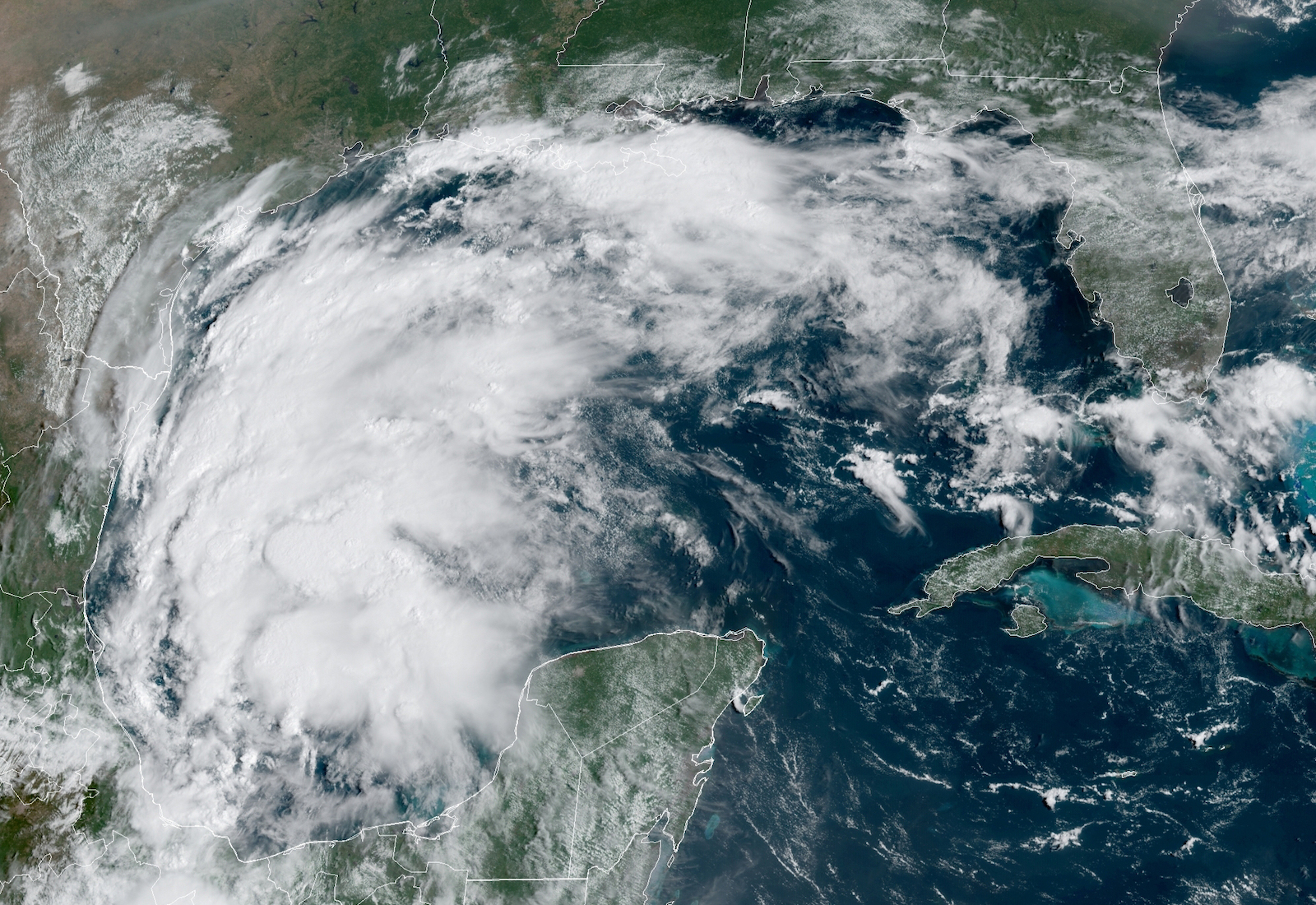Tropical Storm Nicholas made landfall as a Category 1 hurricane in Texas early on Tuesday morning, bringing high winds and torrential rainfall to the state’s coastal communities. The storm has weakened into a tropical storm with sustained winds of 60 miles per hour, and is now moving slowly over the Houston area.
Heavy rain has been Nicholas’ main threat, with Galveston receiving nearly 14 inches as of 5 a.m. local time on Tuesday. On Monday, meteorologists declared a level 4 of 4 risk for excessive rainfall, predicting that Texas’ middle and upper coast could be inundated with 8 to 16 inches of precipitation by Tuesday or Wednesday. Some places could get as much as 20 inches, forecasters said.
Nicholas could cause “life-threatening flash floods” across the deep South during the next couple of days, warned the National Hurricane Center.
That includes much of Louisiana, as the storm moves northeast on Tuesday on Wednesday. Governor John Bel Edwards declared a state of emergency on Sunday, warning that flash flooding could impact South Louisiana communities that are still recovering from Hurricane Ida, which made landfall as a Category 4 storm a little over two weeks ago. Lake Charles, a Louisiana city that has been mercilessly pummeled by tropical storms in recent years, could get up to 10 inches of rain, experts have said. Nicholas could potentially hamper efforts to bring back electricity to the more than 100,000 Louisiana customers who still had no power as of Monday.
At least 8 million people across both Texas and Louisiana have been subject to flash flood watches. By Tuesday morning, a 3- to 4-foot storm surge had racked the upper Texas coast, which includes the Galveston Bay area. More storm surges of up to 5 feet are expected in the region and into the southwestern coast of Louisiana.
The Electric Reliability Council of Texas, which controls most of the state’s power grid, warned of electrical outages from high winds and falling tree limbs. As of Tuesday morning, some 500,000 Texas homes and businesses had lost power.
In the Houston metro area, which is on alert for flash floods, officials prepared for Nicholas on Monday by placing barricades throughout the city and lowering Lake Houston by 1 foot. Houston Independent School District, the state’s largest district, canceled classes on Tuesday in anticipation of the storm. More than 300 flights into Houston have also been canceled, Port Houston terminals have been closed, and all county courts and offices were closed on Monday night. Residents have been directed to hunker down if possible.
“Go home and stay there,” said Lina Hidalgo, the Harris County Judge, in a statement urging residents to find a secure place by 7:00 p.m. on Monday night. “Please do that for your safety and for the safety of our first responders.”
Some parts of Houston have already received 6 inches of rain as of Tuesday morning, while more than 11 inches have been reported for the metro area southeast of the city, causing rivers and creeks to begin rising. Texas Governor Greg Abbott told reporters on Monday that area residents should prepare for “extreme high-water events,” deploying swift-water boats and helicopters to aid necessary rescue efforts for people trapped by the floodwaters.
“Your life is the most important thing that you have,” Abbott said, warning locals not to drive into high water. Before Nicholas struck land, Abbott issued an emergency declaration for 17 Texas counties.
Houston was overwhelmed four years ago by disastrous flooding from Hurricane Harvey, which caused some $125 billion in damages to the U.S.’s fourth-largest city. Nicholas is a much smaller and faster-moving storm than Harvey, a fact that some experts have noted with cautious relief.
“We are just sitting ducks,” said Philip Bedient, an engineering professor at Rice University and co-director of the Severe Storm Prediction, Education, and Evaluation from Disasters Center, in an interview with Grist. He contrasted Houston’s hurricane preparedness efforts to the billions of dollars that New Orleans has spent on storm resiliency since Hurricane Katrina, including coastal restoration efforts and a $1.1 billion surge protection barrier in Lake Borgne.
Houston hasn’t done anything like that, Bedient said. “Very serious money needs to be spent on coastal defense systems.”




